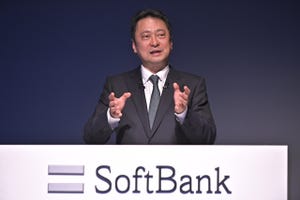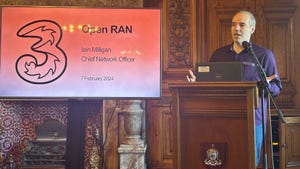CES 2019: IBM CEO Touts 'What's Next' for Data, Computing
Deep data, AI playing bigger role in creating more accurate weather forecasts worldwide.

LAS VEGAS -- CES 2019 -- IBM isn't usually thought of as a consumer technologies company, which makes Big Blue's presence as a keynoter here a bit of a head-scratcher for some.
But Ginni Rometty, IBM's chair and CEO, says her company and its work in areas such as cloud computing, AI, data analytics and machine learning is deeply rooted into many of the technologies, services and products that are on display here this week.
"You don't always see us, but you rely on us underneath," she said here Tuesday.
The big focus of Rometty's talk at CES centered on "what's next" in areas such as computing and deep data.
"Data will be the world's greatest resource," she said, citing IBM Corp. (NYSE: IBM) estimates that less than 1% of data that the world is emitting and is actually collected and analyzed.
She said the world can learn a lot from deep data -- what she defines as data that isn't being collected and sorted through. Some of that can be applied to the medical industry, as she referenced the Sugar.IQ system that consumers can use to manage their diabetes and predict hyperglycemia up to four hours in advance, and new fingernail sensors that can help with early diagnoses of Parkinson's disease and schizophrenia.
IBM's new use of deep data is now being applied to help produce more accurate weather forecasts worldwide. IBM acquired The Weather Company's business-to-business, mobile and cloud-based web properties, in January 2016, and is now ready to make another leap in this field.
With help from data acquired from millions of smartphones (IBM estimates that 100 million will join the mix, with consumer consent), the new global weather prediction system will be based on a model that is updated every hour -- compared to one to two times per day in some regions previously -- and provide a nearly 200% improvement in forecasting resolution across most of the world in sectors spanning 12 square kilometers to three square kilometers. That offering, called the Global High-Resolution Atmospheric Forecasting System (GRAF), naturally, will run on the IBM cloud. It's expected to launch commercially later this year.
Figure 2:  An August 2018 monsoon in India, shown at left by the best current weather model that operates at 13-kilometer resolution. At right, the new IBM Global High-Resolution Atmospheric Forecasting System (GRAF) operates at 3-km resolution and updates six to 12 times more often, the company said. Image source: IBM.
An August 2018 monsoon in India, shown at left by the best current weather model that operates at 13-kilometer resolution. At right, the new IBM Global High-Resolution Atmospheric Forecasting System (GRAF) operates at 3-km resolution and updates six to 12 times more often, the company said. Image source: IBM.
"Whether you're a farmer in Kenya or Kansas, you'll get way better weather prediction," Rometty said, adding later that this sort of deep data capability and visual intelligence will also provide much needed aid to the airline industry. For example, Delta, an IBM partner, will use the system to get an early jump on potential flight disruptions caused by weather.
During her talk, Rometty also referenced the unveiling of the IBM Q System One, billed as the world's first quantum computing system for scientific and commercial use -- it's a full-blown system and "not just a chip", she stressed (Light Reading will have more on this development soon) -- and gave a shout-out to IBM's recent acquisition of Red Hat. (See How Red Hat Could Give IBM's Telco Strategy a New Lease of Life .)
"Most every consumer device is based on open source technologies," Rometty said.
— Jeff Baumgartner, Senior Editor, Light Reading
About the Author(s)
You May Also Like




.jpg?width=300&auto=webp&quality=80&disable=upscale)







